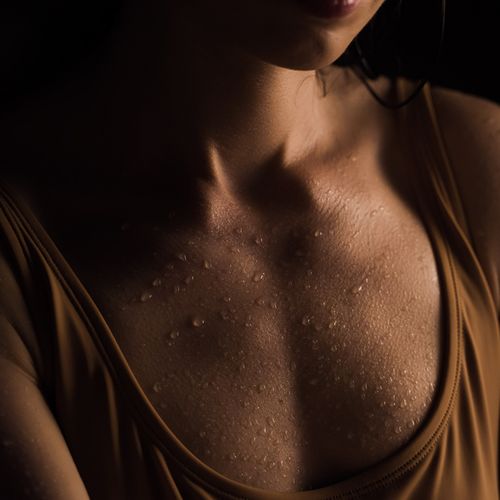Among the challenges that come with being a woman, having fibrocystic breasts-may seem like a minor one. Unless, that is, your breasts often feel achy and tender...you experience significant pain and swelling before your period.. and/or your mammogram is too murky to read, requiring you to have further tests to screen for cancer.
Fibrocyestic breasts have ropy, dense tissue and lumpy, fluid-filled cysts. Frustratingly, Western medicine doesn't have much to offer other than over-the-counter pain medication and, in cases where a large cyst causes extreme pain, drainage with needle aspiration or surgerybut these won't help prevent further cysts from forming. So, it's a relief to hear that alternative therapies can ease symptoms and even help resolve the root causes that lead to fibrocystic breasts, according to Cindee Gardner, PhD, DHom, a homeopathic practitioner, molecular biologist and herbalist in Pittsburgh.
The following natural therapies have long traditions of use and (unlike drugs and surgical procedures) have no adverse side effects or risks when used as directed, so there's no harm in trying them to see if they relieve your symptoms and/or help prevent future flare-ups. The products mentioned below are available without a prescription at health-food stores and/or online...the treatments can be used alone or together in any combination. Options…
- Homeopathy. Homeopathic remedies are tailored to address a particular combination of symptoms, so choose whichever one of the following most closely matches your situation.
- Your breasts often feel heavy, hard, stony and swollen-try the homeopathic remedy called Phytolacca decandra.
- Aching and lumpiness worsen before your period and tend to be accompanied by tearful moods-opt for Pulsatilla.
- Cysts and soreness occur mainly in the left breast-consider Calcarea phosphorica.
- Symptom flare-ups are accompanied by itching-use Silica.
For moderate pain, Dr. Gardner recommended using a 30x or 30c remedy three times per day as needed, following the directions on the label...for severe pain, use the remedy every 30 minutes as needed, lessening the frequency as symptoms improve.
Important: When using any of the remedies above, avoid drinking strong coffee or inhaling strong scents of mint or camphor (for instance, from mothballs)-these can counteract a remedy's effects.
If a nonprescription remedy doesn't help or you need to use it more than a few days per month, it is best to consult a professional homeopath. As Dr. Gardner noted, there are about 45 different remedies for fibrocystic breasts listed in the Homeopathic Materia Medica (the homeopath's version of the Physician's Desk Reference)-so identifying the most effective one for you may require expert guidance. To find a practitioner, visit the Web site of the National Center for Homeopathy (www.bomeopathic. org/practitioners) or The National United Professional Association of Trained Homeopaths (www.nupath.org).
- Breast massage. This practice relieves fibrocystic breast symptoms and helps prevent flare-ups because it stimulates the endocrine system to balance female hormones, keeps breast tissue from getting overly congested and reduces stagnation in the breast glands and ducts, Dr. Gardner said. She recommended massaging the breasts with a topical product called Vita-Cal with Poke, available from www. archeusonline.com, which contains vitamins A, D3 and E and organic cold-pressed oils (sesame, avocado, mango, nut, etc.). This rich cream, which is easily absorbed through the skin, is designed to help break up cysts and relieve lymph stagnation.
At least once a week: Lie down, breathe deeply and relax. With a dab of the cream, massage each breast for five minutes or more, moving outward from the nipple and using circular motions, first in one direction and then the other.
- Dietary changes. Many women report that fibrocystic symptoms ease significantly when they avoid caffeine and limit high-fat foods, particularly meat and dairy products, Dr. Gardner noted. It also is helpful to drink plenty of water between meals and to increase intake of high-fiber, high-water-content foods such as fruits and vegetables.
- Herbal tonic. Dr. Gardner also recommended an oral product called Cystic Breast Tonic (from www.archeusonline.com), which combines extracts from various herbs including burdock, echinacea and poke root. It works by thinning the lymphatic fluid so that it can more effectively remove toxins and by aiding the breakdown of fibrous tissue, she explained. For acute symptom flare-ups, take 30 to 60 drops four times per day as needed, continuing for up to one week...for chronic discomfort, take 40 drops twice daily. If symptoms persist for more than three months, consult a trained herbalist.
Referrals: American Herbalists Guild, www. americanherbalistsguild.com
